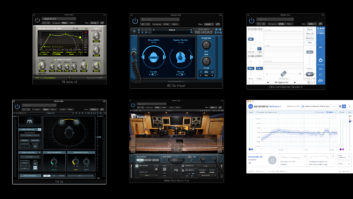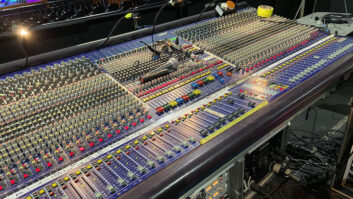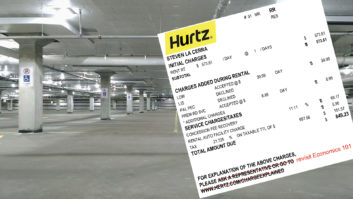Forget about pork bellies or soybean futures; a great long-term investment might be to buy stock in hearing aid manufacturers. Why? Because a whole generation will likely be going deaf in 15 to 20 years. I don’t want to be an alarmist, but due in large part to the presence of mobile devices (aka, “personal audio devices”), almost everyone is walking around with earbuds playing music at levels that are bound to damage their ears over time.
The problem has even caught the attention of the World Health Organization, which recently promoted “World Hearing Day” to raise awareness about the issue. According to the WHO website, “1 billion young people (12-35 years) are at risk of hearing loss due to recreational exposure to loud sounds.”
While this kind of damage is mostly self-inflicted, it’s not easy to avoid. Just walking around with earbuds can be problematic. If you want to hear what you’re listening to clearly over environmental sounds, it’s hard not to turn your device up to unsafe levels. The worst example of this I ever saw was on a New York City subway train, which is probably a loud enough environment to be ear-damaging on its own. A guy was sitting across from me with earbuds on, listening to music, and I could hear the sound bleeding through his earbuds over the train noise. I can’t imagine what it felt like to his ears.
Nightclubs are no friend to ears, either. Whether it’s a live band or recorded music, the SPLs are virtually always above safe levels. I was at a club last week to hear an electro-pop trio. I was standing by the stage and it seemed awfully loud, so I opened up my SPL-meter app on my iPhone and found levels consistently reaching 107dBA.
That’s anecdotal, of course, but the WHO information is based on empirical data. An FAQ section on the WHO site offers fascinating information on our capacity to handle loud sounds. I have long known that ear damage occurs not only from high sound levels, but from repeated exposure to them over time. What I didn’t know is that we all have a “daily sound allowance”:
Sensory cells can tolerate only a certain amount of daily noise before being damaged: this amount is called the daily sound allowance. If your cells are exposed to too much sound, you exceed your daily sound allowance which harms your ears and hearing. Over time this results in hearing loss.
Your daily sound allowance works like a monetary allowance or pocket money: you have a limited amount to spend each day. For example, the louder or longer you are exposed to high levels of sound, the more you “spend,” the faster you run out of your allowance.
To practice safe listening, you must stay within the limits of your allowance. On your personal audio device this can be easily done with the help of software that monitors your daily sound allowance. It is more difficult to monitor exposure to loud sounds in entertainment venues or the environment generally.
On days you know you’re going to be at a concert or loud club, they recommend reducing the time you spend on your personal audio devices, so that you don’t exceed your daily sound allowance.
I’m glad to see an organization as high-profile as WHO taking on this subject because most people have no idea how their daily (and nightly) activities are damaging their hearing. I sincerely hope that the manufacturers of mobile devices and app developers will help implement some of WHO’s recommendations.
Even those of us in the audio world, who depend on our ears to do our jobs, often listen at levels that are unsafe. It’s easy to do without realizing. Anything over 85dB SPL can cause damage over time, and that’s not particularly loud.
When I’m wearing headphones in the studio, one thing I try to do first is to set a comfortable level, and then lower it some. I find I can adjust to the reduced level pretty easily, and I’m giving my ears a break by doing so. I do the same thing with monitors.
There’s no reason you can’t monitor at safe levels and turn the monitors up occasionally to check your mix. Most engineers I’ve spoken to say they don’t monitor at loud volumes consistently. Besides the benefit to your hearing, setting monitor levels low helps keep ear fatigue at bay, which makes you more productive for longer during a mix.
All the little things you do each day to reduce your noise exposure will help lessen your susceptibility to damage. For those outside the audio world, premature hearing loss is a shame. For those of us in the business, it can be a tragedy. So be careful out there!







